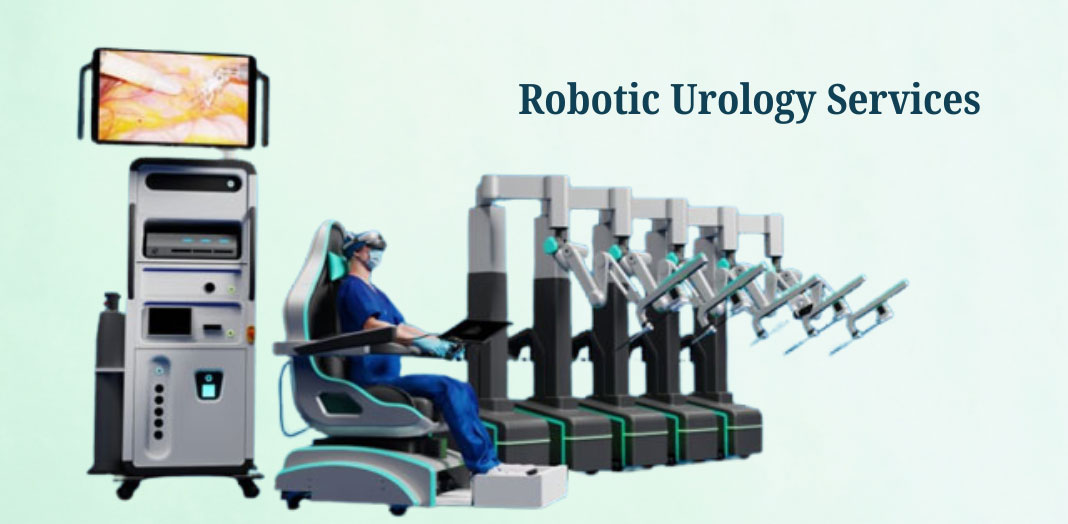Robotic Urology Services

Specialized in robotic-assisted surgeries for prostate, kidney, and bladder cancers, as well as complex reconstructions. Robotic surgery ensures enhanced precision, minimal scarring, faster recovery, and better surgical outcomes.
In the quiet hum of a state-of-the-art operating room, a robotic arm glides with precision, its movements guided by a surgeon’s steady hand from a console across the room. This is the future of urology—robotic urology services, a revolutionary blend of human expertise and cutting-edge technology transforming patient care. With unparalleled accuracy and minimally invasive techniques, these services are redefining treatment for conditions like prostate cancer, kidney disorders, and bladder issues.
Robotic urology leverages advanced systems like the da Vinci Surgical System, which translates a surgeon’s movements into precise actions by robotic instruments. Unlike traditional open surgery, which often requires large incisions and extended recovery times, robotic procedures use tiny incisions. This means less blood loss, reduced pain, and faster recovery for patients. For someone facing a prostatectomy, this could translate to returning to daily life in weeks rather than months, with minimal scarring.
The precision of robotic systems is particularly vital in urology, where delicate structures like nerves and blood vessels are intricately woven around organs. In prostate cancer surgeries, for instance, preserving these structures can maintain a patient’s quality of life by reducing risks of incontinence or erectile dysfunction. Surgeons, aided by 3D high-definition visuals and instruments with a greater range of motion than the human hand, can navigate these complexities with confidence.
Beyond technical prowess, robotic urology services prioritize patient-centered care. Imagine a middle-aged man, anxious about a kidney tumor diagnosis, finding reassurance in a procedure that minimizes hospital stays. Post-surgery, he’s not confined to a bed but walking within hours, planning his return to work. This is the human impact of robotic intervention—less disruption, more empowerment.
Hospitals adopting these services also see broader benefits. Shorter hospital stays reduce costs, and the lower risk of complications enhances patient outcomes. In 2024, studies showed robotic-assisted surgeries had a 30% lower complication rate compared to traditional methods for certain urologic procedures. This data underscores why leading medical centers are investing heavily in robotic technology.
Yet, the journey isn’t without challenges. The high cost of robotic systems and the need for specialized surgeon training can limit access in some regions. However, as technology advances and costs decline, the democratization of robotic urology is on the horizon. Tele-surgery, where surgeons operate remotely via robotic systems, could further expand access, bringing world-class care to underserved areas.
Robotic urology services are more than a technological marvel; they’re a testament to human ingenuity meeting compassionate care. As these systems evolve, integrating AI and machine learning, they promise even greater precision and personalized treatment plans. For patients, this means hope—not just for survival, but for a life reclaimed with minimal compromise. In the delicate dance of healing, robotic urology is leading the way, one precise movement at a time.
